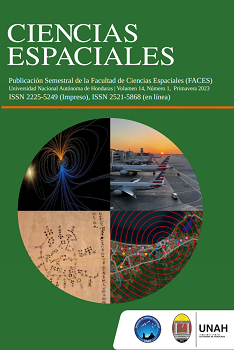Constellations Big Ladle, Snake, Sword and Turtle using the method of Zhou Bi
DOI:
https://doi.org/10.5377/ce.v14i1.15605Keywords:
Zhou bi Suan Jing, Chinese asterisms, gnomon, talisman, AstronomyAbstract
Inspired by reading a 2011 article authored by Stefan Maeder, it was possible to identify four Chinese asterisms; these appear in a talisman of the sixth century AD. The Big Dipper, inscribed as a series of points, is along with depictions of three other figurative elements: snake, sword, and turtle. On the other hand, when translating and interpreting an ancient Chinese book (the Zhou bi Suanjing) from the English version made by C. Cullen, a method of stargazing using a gnomon was systematized. Thus, with the help of both elements, the asterisms or constellations and the gnomonic method, an approach to the possible designs of the ancient Chinese astronomers is discussed here, for the designation of the asterisms with their names. To do this, a simple description of the gnomonic method that includes the use of a rope attached to the end of the gnomon to observe each star and fix its projection on the floor is done. The definition of the 28 lunar mansions of the Sky is described, as well as the definition of each of the four constellations as proposed by Maeder, assuming that the antecedents of the methodology date back at least to the second century BCE. The results are encouraging to suggest a possible path for Chinese astronomers to observe the sky that allow us to find a source for myths and legends related to stars (Astronomy) and Earth (Culture) that are embodied in an elemental object, represented here by the Talisman.
Downloads
409
Downloads
Published
How to Cite
Issue
Section
License
Copyright (c) 2023 Ciencias Espaciales

This work is licensed under a Creative Commons Attribution-NonCommercial-NoDerivatives 4.0 International License.




